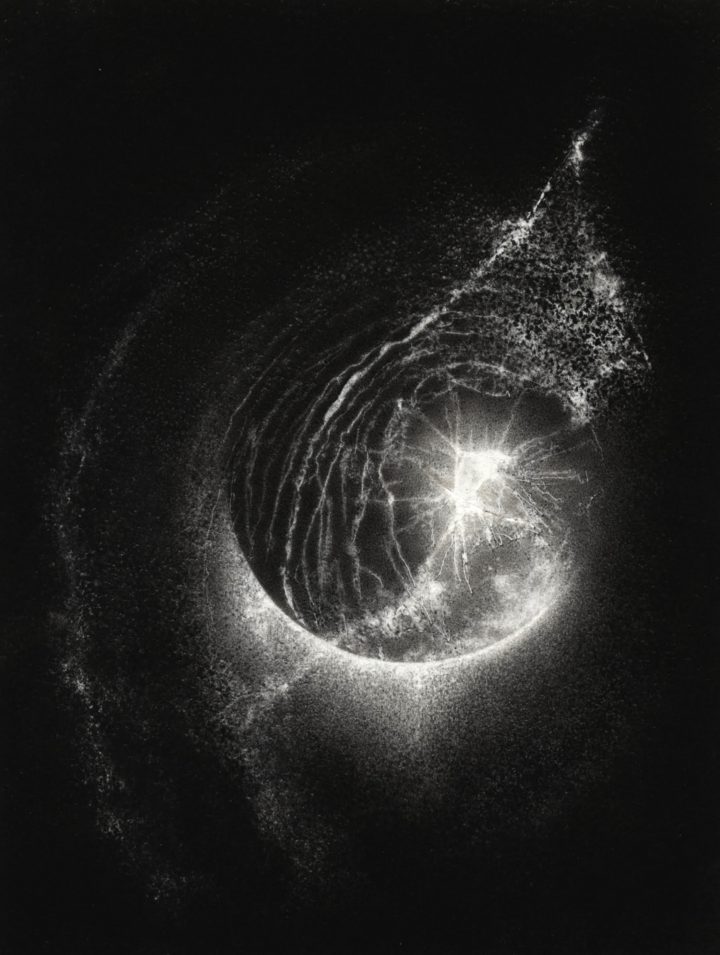By Jhon Sánchez
New York has fascinating places hidden inside the tall buildings. Take an elevator to the 5th floor at 250 W. 40th Street in #GarmentDistrict and a new world of printmaking will open. The Manhattan Graphic Center (MGC) is non-profit community studio where artists support one another to make original prints. One of their current exhibits is “The Climate Crisis: Endangered Earth,” organized by long-standing member William C. Tucker. The show is a call to respect “the sanctity of the endangered natural world.” We had the opportunity to talk with Tucker and Sarah Kirk Hanley, Executive Director of MGC.
JS: First of all, thank you for taking the time to have a chat with us. This exhibit coincides with activism initiated by Greta Thunberg and Extinction Rebellion. How did you come up with the idea?
TUCKER: Some of our artist-members have environmental backgrounds, are interested in conservation, or depicting the natural world in their work. We began organizing the exhibition last spring in response to a proposal submitted by them in response to their commitment to this topic. This subject inspires passion in many of our members and we received many submissions. The timing is fortuitous but entirely coincidental.
JS: Why is it important that artists cover the topic of climate change?
HANLEY: Artists have long provided essential visual identities to social movements, for instance the I WANT YOU (Uncle Sam) and WE CAN DO IT (Rosie the Riveter) posters for World Wars I and II. Such images give visual form to the aspirations and ideals of these movements, a service that only artists can offer. These visual reminders help activists make sense of their intentions and goals and motivates others to join the cause.
JS: Could you tell me what kind of subtopics inspired the artists?
TUCKER: Some artists in the show are exclusively focused on climate change in their general practice, but others also wished to contribute even if their work is not customarily centered on this topic. The result is a show as varied and complex as the topic it covers. Some focus on the natural resources we stand to lose, such as William Waitzman’s depiction of a right whale eating plastic garbage; Bruce Boyd’s meticulously rendered forest image, and Lisa Studier’s image of an endangered (or possibly extinct) frog. Others show an ailing planet, such as Donna Diamond’s “Peril,” and my own piece—a projection of the “dead planet” that Earth could become if climate change continues unchecked.
JS: Do you think art gives us some hope in the future?
HANLEY: Art is a mirror of society. Some artists create images intended to inspire change, others shine a light on corruption and destruction. Others simply engage in, and reflect the culture’s values, noble or less so. The interpretation is left to the viewer.
TUCKER: For our members, the intention of the “Climate Crisis” exhibition is to raise awareness and give a voice to the various concerns of the #climateaction movement. Gauguin once said, “Art is eternal and can have a thousand forms.” Likewise, hope is also eternal and can have a thousand forms.
JS: Would you like to add something else?
HANLEY: For many MGC members, #climateaction is an urgent issue. We hope to inspire action in those who remain complacent and to give energy to the movement.
Please visit the exhibit from September 24 to October 27: Manhattan Graphic Center, 250 West 40th Street, Fifth Floor.
Jhon Sánchez: A native of Colombia, Mr. Sánchez arrived in the United States seeking political asylum. Currently, a New York attorney, he’s a JD/MFA graduate. His most recent short stories are Pleasurable Death available on The Meadow, The I-V Therapy Coffee Shop of the 21st Century available on Bewildering Stories and “‘My Love, Ana,’—Tommy” available on https://www.fictionontheweb.co.uk/ . On July 1st, The Write Launch released his novelette The DeDramafi, which will be also reprinted by Storylandia in 2021. He was awarded the Horned Dorset Colony for 2018 and the Byrdcliffe Artist Residence Program for 2019.










